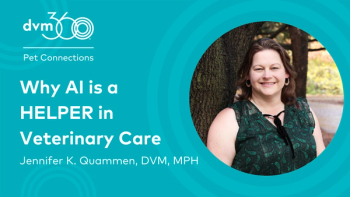
The sixth stage of grief
There's a different kind of pain that comes from making the decision of life or death for a pet.
Denial, anger, sadness, bargaining, and acceptance. These are the five stages of grief outlined by grief psychiatrist Elisabeth Kübler-Ross. Most people who have suffered a loss can identify with these stages. After the journey that led to my choice to "put down" my 17-year-old Peekapoo, however, I found one major part of my grief had been left off that list: guilt and questioning. I've added this to Kübler-Ross' list, and I call it the sixth stage of grief.
Gatsby was very old, but he had no real health problems other than occasional urinary tract infections and persistent ear infections. Nonetheless, because of his age, we predicted Gatsbys time was short years before he died. We had an any-day-now mentality, and I felt prepared. I wasnt.
Before Gatsby died, I wasn't a stranger to pet loss or euthanasia. As a team member in one of the first pet hospices and as a bereavement coordinator, I'd sat with many pets and owners during the final moments. I'd also been intimately involved with the process that leads up to that day—the difficult process of weighing when it's time.
I'd considered euthanasia for Gatsby a few times before the day I took him in. I had strong ideas about what markers to look for, like waiting until he stopped eating. I'd given the topic much thought, but I still wavered at times and wondered whether I should wait that long.
His quality of life deteriorated and he wasn't really able to go on walks. He was often incontinent and was nearly blind. As time went on, my strong opinions were tested, and I grew more and more distressed at the idea of having to decide whether he should live or die.
Ultimately, I waited until he had stopped eating for a few days and began to stumble around and call out. His last moments were spent in the emergency clinic, where he was euthanized in the middle of the night.
I didn't expect the grief that followed. I loved my dog and missed him; that wasn't the surprise. I was surprised at the guilt I couldn't shake and the images of him looking at me before he went to "sleep." At the time, I believed I was making the right decision, but the next day I was filled with doubt. What if I'd taken him to my veterinarian instead of the emergency clinic? Was there something that could have been done? Should I have let him die naturally? Was he ready? Was he upset with my decision? Did I do the right thing for him?
Euthanasia adds another layer to grief. There is a responsibility that we're usually spared with the people we love. The guilt and the questions clouded my memories for months. Mostly, I remembered the final day and the months leading up to it when he was so enfeebled. Why couldn't I remember when he was a puppy and would push the ball off the side of our stairs and go fetch it? Or when he and I would play chase around the house? Or when I was sick and he would stay by my side until I was well again? It was maddening to only remember the hard times. I was troubled and spent many sleepless nights wondering whether I'd made the responsible choice for a creature that I loved so dearly.
In time, some memories of the good days began to resurface. Like my grief, the guilt has lessened but has never completely gone away. Intellectually, I know I made a reasonable choice. But remembering still makes me cry, and I still ask myself whether I did the right thing.
It's essential to recognize this sixth stage of grief and do what we can to assure the owner that their choices are done out of love and, whenever possible, reassure them that their choice is right. It's also important to help them understand that this guilt and questioning is a natural part of grieving for a pet who has been euthanized.
Many pet loss support resources I've explored talk about the guilt as if it's something we can overcome by talking to ourselves rationally. It's no easier to overcome than the sadness we feel about our loss and should be expected as part of the grieving journey. Euthanasia is simply one more way we have to say goodbye.
There's an innocence to the ones we love who do not speak. There's a different kind of pain that comes from making the decision of life or death for them. I will always pray that I did the right thing for my Gatsby. I wasn't expecting the pain of my guilt. I can only hope that my story will help ease another's heavy heart.
Tiffany Christensen is a receptionist and bereavement coordinator at Cole Park Veterinary Hospital in Chapel Hill, N.C. Please send questions or comments to
Newsletter
From exam room tips to practice management insights, get trusted veterinary news delivered straight to your inbox—subscribe to dvm360.






